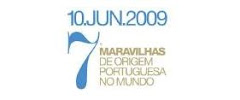
Natal...
É sempre em Dezembro?
Natal...
Somente um por ano?
Ou será um puro engano,
Onde sem querer eu caí?
Será sinal de Natal,
Quando me lembro de ti?
Quando sem sair daqui,
Fujo para parte incerta,
Procuro uma ilha deserta,
E envio-te um postal?
Para mim não é Natal!
A data pouco me interessa.
Hoje acordei bem depressa,
Para escrever uma prenda,
Ir ao encontro da lenda,
E te dar este sinal.




















































